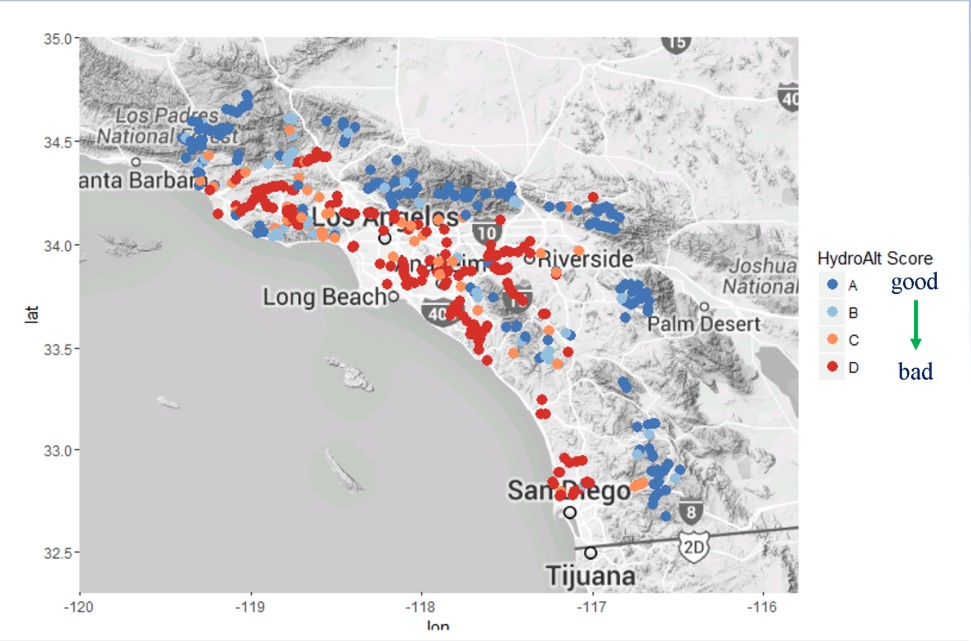New stream flow targets aid in watershed planning decisions

SCCWRP and its partners have published a comprehensive study outlining how to use a suite of newly developed flow-ecology modeling tools to optimally protect the in-stream biological communities of more than 600 wadeable stream sites across Southern California.
The three-year study, published in March, is intended to help Southern California watershed managers as they make difficult decisions regarding how to set stream flow targets across a watershed – decisions that can affect everything from reservoir operations to stormwater capture and use strategies.
The flow-ecology modeling work involved mathematically modeling the hydrological flow patterns that are necessary to sustain healthy, in-stream biological communities for 572 wadeable stream sites across Southern California.
Watershed managers already have begun using the flow-target data sets, along with associated assessment tools developed during the study, to understand the ecological implications of altering hydrological flow patterns in various watersheds. Study data also are being used to inform development of a statewide assessment framework that will guide watershed managers in setting recommended flow targets for streams statewide.
The scientific framework that SCCWRP and its partners used to develop the recommended flow targets is known as the Ecological Limits of Hydrologic Alteration (ELOHA). The framework relates flow alterations to stream condition as indicated by benthic macroinvertebrate stream communities. With ELOHA, researchers are able to factor in a wide range of flow conditions (i.e., stormwater flows vs. low flows) and climatic conditions (i.e., wet vs. dry years).
During the study, researchers identified seven flow metrics identified as having the most influence on biological condition; flow alterations beyond the thresholds proposed by the study were assumed to be associated with declines in in-stream biological condition. Watershed managers can now use the stream flow-target data and assessment tools to evaluate the impacts of proposed flow alterations, as well as prioritize areas for protection. The flow-target data also offer insights into the level of influence that flow patterns have in terms of altering in-stream biological health at a given site, relative to other factors such as contamination and habitat alteration.
In-stream biological health is one of numerous factors that watershed managers must take into account as they set flow targets for various streams. Watershed managers also are responsible for maintaining flood-control protections, maximizing conservation and reuse, and being responsive to requests to maintain existing flows for ecological purposes.
The San Diego River watershed served as the first case study evaluating the utility of the new flow-ecology modeling tools. Watershed managers there used the tools to evaluate how proposed changes in reservoir management strategies would impact in-stream biological communities. The managers also examined how the proposed installation of low-impact development (LID) solutions for managing stormwater runoff would impact in-stream biological health.
More news related to: Ecohydrology, Top News